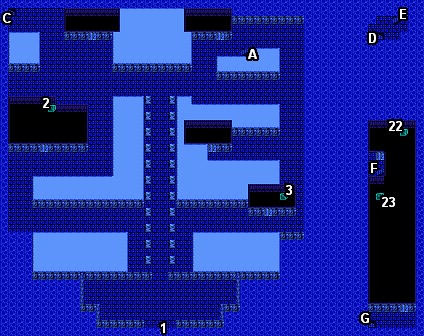
The music is as clear as a bell, without any noticeable impurities, although the limited sound capacities of the Game Boy Advance keep the music translation from being as good as it could be. The translation of the audio is as good as that of the video. This is a big part of why the game is so fun to play on the handheld, even with Origins still out in the market. The upgraded graphics look crisp and clear on the high-resolution LCD display of the Game Boy Advance. The two games make the most graceful transition between consoles of any Square Enix port to date. Strengthening characters in Final Fantasy II can become very time-consuming and even outright tedious, and it doesn’t help that doing so is essential to completing the game. The characters don’t gain experience points or go up levels, but the different status sections of each character grow individually based upon how they are affected in battle. Final Fantasy II‘s battles run a little differently. Once enough points have been accumulated, the characters gain a level and their stats are raised a certain amount. In Final Fantasy, the characters gain experience points.

Once the commands have been entered, the player’s characters and the enemies exchange blows until the next turn or until one side is defeated. The battles are turn-based all of the commands for the characters to perform in a turn are given out at the beginning. Merely a year later, the same two games made a North American appearance once again in Final Fantasy I & II: Dawn of Souls, this time for the Game Boy Advance and with loads of new extras.īattles in Dawn of Souls look and play out identically to those in Origins.

Origins included the overhauled new versions of Final Fantasy I and Final Fantasy II plus new full-motion video sequences and was released for the PlayStation. It wasn’t until 2003 with Final Fantasy Origins that North American gamers could at last experience Final Fantasy II. Years later, the two games were overhauled and remade for the handheld system, Wonderswan Color, which was never released outside of Japan. Final Fantasy was then unleashed on North American shores to a very warm welcome, whilst Final Fantasy II remained in Japan. Nearly two decades ago, a young Japanese video game company, Squaresoft, released the two introductory titles to what eventually became their flagship RPG series: Final Fantasy.


 0 kommentar(er)
0 kommentar(er)
